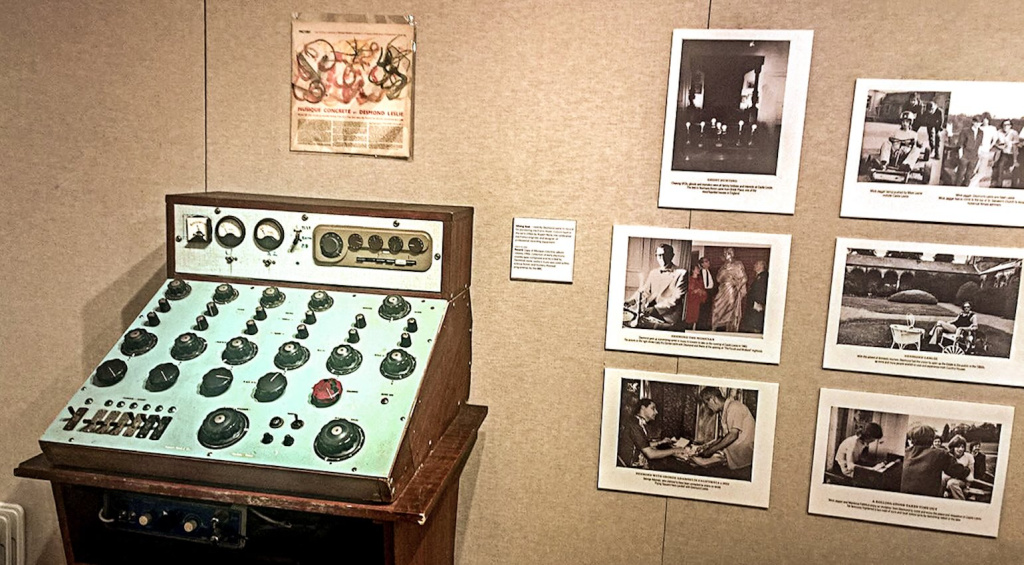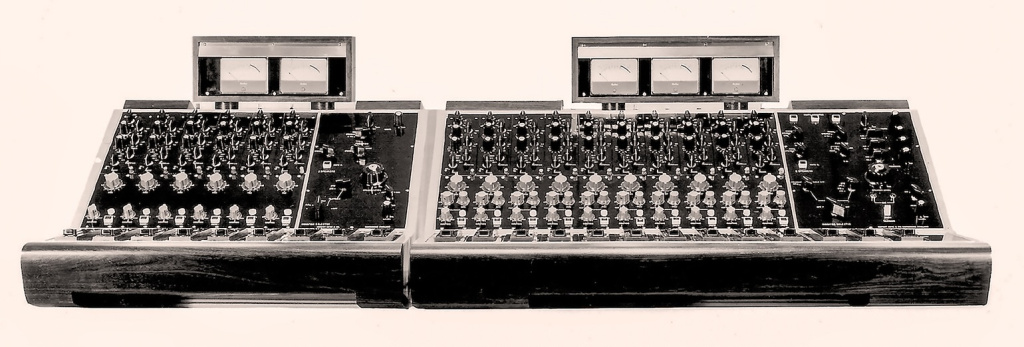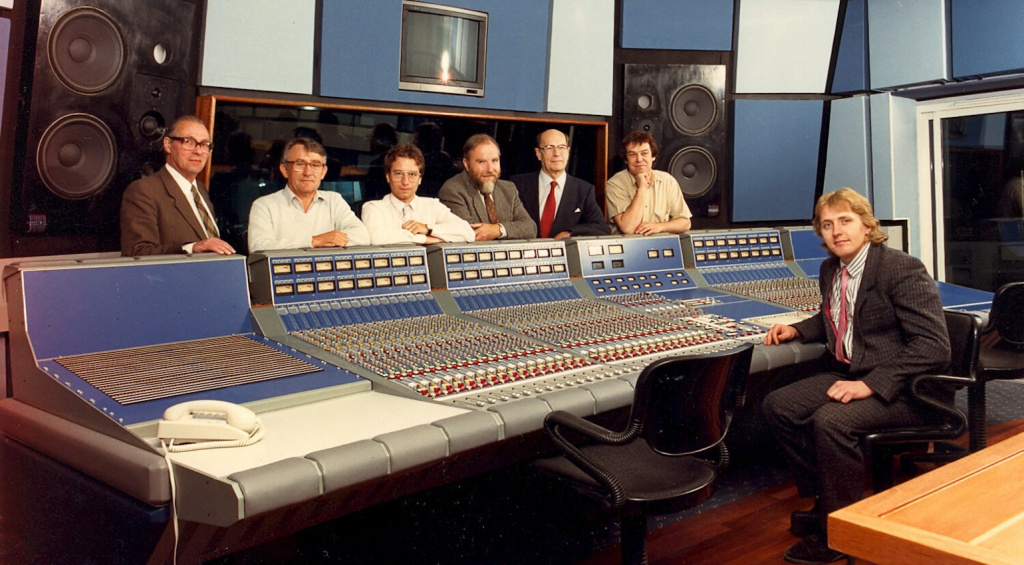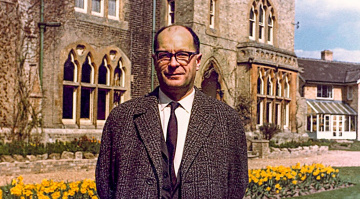We look into the history of Neve, one of the most influential audio manufacturers of all time, and the journey of its founder, Rupert Neve.
Today, it’s impossible to come into contact with recording culture without hearing the name Neve. Whether you’ve spoken to a veteran engineer who used legendary early-1970s Neve equipment in studios, or simply bought your first 1073 clone, there’s no escaping it.
The History Of Neve
Like many electronics innovators, Neve was driven by the increasing demands of the recording and broadcast industries. The story behind the company is not without ups and downs, but let’s take a look at some of the highlights.
The First Ever Neve Mixer
In the mid-1950s, the first time Rupert Neve was commissioned to design a mixer was by Desmond Leslie, a Musique Concrete composer and sound designer. Leslie had a system that used sound loops from multiple tape machines and needed a way to layer and balance the different signals.

Moreover, he had a contract doing the background music for Shakespeare productions with EMI, and so the first ever Neve console was designed. The mixer’s design was simple by today’s standards and used tube topology with 2-band Baxandall EQs on the channels for treble and bass.
Also, the channels and master bus had echo sends for routing signals via echo chambers for adding reverb. However, the drawback of designs of this time limited the functionality, as tube circuitry required so much space. Furthermore, the high voltage levels used were hazardous, and could even be lethal if you were exposed.
Switching to Transistor-based designs
As the company grew, Neve moved its operations to what became known as the Priesthaus facility in Little Shelford, Cambridge. It was at this time that Rupert Neve was working on new germanium transistor-based circuit designs that could meet the more demanding requirements of recording studios.

The first transistor-based Neve console was designed for Philips Recording Studio in London in 1964. At this time, electronics companies like Philips and EMI had record label divisions with in-house studios, and this is how the demand for consoles began to rise.
The first order that Rupert Neve fulfilled for Philips Records Ltd. was, in fact, for eight of his newly developed transistor-based EQ units. When the engineers tested the units for distortion, they were flabbergasted at the sound quality, even without any boosts or cuts active.
Diversification into Broadcast Audio
The word of Neve’s early consoles spread fast, and soon other recording studios were demanding custom-specified designs of their own. Requests were also flowing in from broadcast studios, so Rupert Neve decided it was time to bump up production.

The 2000-square-foot Priesthaus operation was insufficient for the new demands. Therefore, in 1968, the company built a dedicated 12,000-square-foot factory in the small town of Melbourn, outside Cambridge.
One of their new broadcast clients was ABC Weekend Television, UK, and in this same year, Neve designed the diode-bridge 2253 limiter for their requirements. Subsequently, this led to the creation of the now-renowned 2254 limiter, which is still produced today.
Neve’s new factory and the move into broadcast audio resulted in an annual growth of 1400% in 1969. In addition, they entered the US market with innovations like console faders from EAB Guiling, EMT, and Penny & Giles, as well as the first solid-state switching matrix.
The famous 1073 Mic Preamp
When the Neve A88 console was built for the Wessex Sound Studios in London in 1970, this would prove a turning point in the company’s history. Significantly, inside each channel was the 1073 preamp that would become the standard in music recording.

Bands like King Crimson and Queen were some of the first to reap the rewards of using the 24-channel A88 console at Wessex. Equally, the BCM10 (AKA the sidecar) broadcast console featured the same 1073 preamps and became an essential part of the creative process for artists like Pete Townsend of The Who.
What made the 1073 design different was its hand-wired discrete components, without the use of an integrated circuit board. Furthermore, the inclusion of transformers in both the input and output stages.
This allowed users to dial in a wide range of sounds with the combination of gain staging and the versatile 3-band inductor EQ that has the perfect balance of precision and musicality.
Focusrite Ltd.
As the company grew beyond Rupert Neve’s expectations, he looked into other endeavours beyond the scope of audio design. When the opportunity presented itself, Rupert and his wife Evelyn sold the company and its affiliates in 1975 and started ARN Consultants.

As the sale of Neve included a 10-year non-compete agreement, ARN focussed on sound reinforcement, acoustics, and education within the audio industry. However, once the non-compete had expired, Rupert Neve went back into consoles, forming the Focusrite Ltd. company.
They began taking orders and went ahead with the production of eight new Focusrite Forte large-format consoles. Although the analogue design of these esteemed desks is legendary, they ran into problems on the digital side. Moreover, with SSL dominating the industry, it seemed like the venue was set up to fail.
The company dissolved in 1989 and sold all assets to Phil Dudderidge who rebranded it as Focusrite Audio Engineering Ltd, which would become the household brand we know today.
The History of Neve: A New Era
After designing the 9098 console and a range of outboard gear for AMEK, Rupert and Evelyn Neve moved to the US in 1994. Meanwhile, back in the UK, Neve had merged with AMS and moved to its new headquarters in Burnley in 1992, where AMS Neve is currently situated today.

For Rupert and Evelyn, the move to the States marked a new beginning, and a chance to take a break from industry contracts. This time was important, as it gave them the chance to reflect before considering starting a new venture.
Years later, in 2005, the Neves partnered with Joshua Thomas and founded Rupert Neve Designs, the industry-leading audio company. As we know today, RND combines the values of Rupert and Evelyn with Rupert’s design philosophy and experience.
More about the History of Neve:
*Note: This article about the History of Neve contains affiliate links that help us fund our site. Don’t worry: the price for you always stays the same! If you buy something through these links, we will receive a small commission. Thank you for your support!






